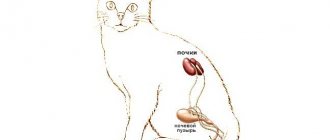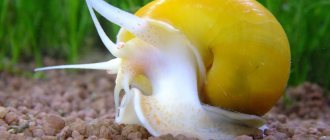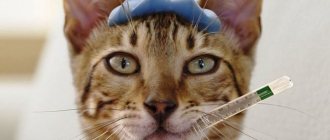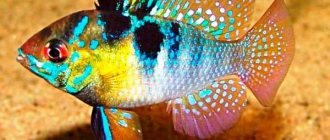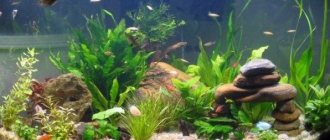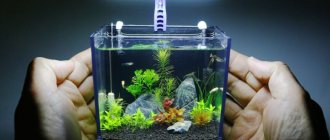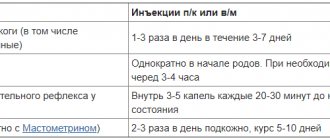12/18/2020 7,465 Aquarium
Author: Olga
Aquariums require care and patience. Aquarium owners often have to deal with various diseases of their inhabitants. In order not to lose them, it is important to start treatment on time. A good remedy for fighting diseases is the anti-steam preparation for fish, which is easy to use according to the instructions.
[Hide]
Composition and properties
Anti-steam for aquarium fish is an effective comprehensive remedy for various diseases. This antiseptic bactericidal drug contains formaldehyde and organic dye malachite green. The medicine is a blue-green liquid. When you use it, the water also becomes colored, so don’t be alarmed.
It is sold in bottles of 15, 20 and 25 ml. It has a distinct strong odor of formaldehyde. Anti-steam has an antiseptic effect, due to which it promotes the healing of various surface injuries. In addition, it can be used to combat parasites, fungal infections, and other infectious diseases. The product prevents the proliferation of pathogens and destroys them.
Anti-steam is classified as a moderately dangerous product. The drug is low toxic for fish. If you strictly follow the instructions, it will not cause harm to aquarium inhabitants. It also does not have a harmful effect on plants, so they are not removed from the aquarium during treatment. It is important to follow the prescribed rules of use and the required dosage.
Anti-steam for fish
"Antipar" is an antiparasitic, antifungal and antibacterial drug for external use. More often found on sale are plastic 20 ml vials with blue liquid. Ingredients: malachite green 0.2%, formaldehyde 10.0%, and water distilled to 100%. Anti-steam has a complex effect on pathogens: malachite green binds the intracellular cytoplasmic structures of parasites, formalin denatures their proteins.
As a result, the metabolic agents of fish diseases are disrupted and they die. The drug belongs to low-hazard substances (hazard class 3 according to GOST 12.1.007-76), in recommended doses it is well tolerated by fish and is slightly toxic to aquatic plants.
Indications for use
Anti-steam for aquarium fish is used in the treatment of various diseases, including saprolegniosis, trichodinosis, cryptobiosis, gyrodactylosis, oodiniumosis, costiosis, ichthyophthyriosis. It is also able to get rid of fin rot, dactylogyrosis, cryptokaryosis, chylodonellosis, and apiosomosis. It is suitable for use by both freshwater and marine fish. The main thing is to start treatment on time to avoid the death of all inhabitants of the aquarium.
Anti-steam can also be used to prevent these diseases. For newly purchased fish, it is recommended to undergo quarantine using anti-steam. If you suspect the appearance of a disease, you need to remove sick fish and carry out treatment. When the disease occurs, fish often develop lethargy, various spots and rot, and a desire to rub against stones and soil. You may also experience hovering in one place, lying on the bottom, and greedily inhaling air at the surface of the water.
Composition of the antipar preparation and purpose
This is a product that contains components that disinfect the entire aquarium.
Due to the formalin contained in its composition. The products are produced in bottles of 15, 20 or 25 ml. It helps with infectious and fungal diseases in fish and cleans the aquarium well.
You need to be a little careful when using it because this drug is moderately dangerous. It can be used in liquid with any level of sea salt or in freshwater.
Antipar treats the following diseases:
- Costiosis
- Cryptobiosis
- Amoebiosis
- Saprolegniosis
- Trichophriasis
- Uronelosis
- Brooklynellosis and many others.
Anti-steam will help in the fight against fin rot.
This medicine is also actively used as a prevention of putrefactive diseases. When simply placing new fish into a common aquarium, you should definitely add an anti-steam solution.
Anti-steam is designed not for the volume of the aquarium, but for the amount of water.
In order to subtract, you need to subtract from the size measurements the volume of soil and the space left without water to the top of the aquarium.
Instructions
Anti-steam for aquarium fish is used for external treatment. How to properly treat fish with it is written in detail in the instructions. It can be applied in several ways. Depending on the situation and the disease of the fish, the drug is used for short-term and long-term baths. You can treat aquarium inhabitants either with or without placing them in a separate container.
It is recommended to treat freshwater fish with long baths. They should also be done for drug- and transplant-sensitive species. In this case, the product is usually added directly to the aquarium. It should be diluted in the following proportion: 1 ml of medicine per 50 liters of water. The course of treatment can last from five to ten days until the symptoms of the disease disappear.
When adding the solution, it is recommended to turn off the lighting and filters with sorbents. However, when treating oodinosis, the lighting should be intense. The fish should be fed no earlier than two hours after adding the solution. If food remains in the water after feeding, it must be removed. After treatment is completed, the water is changed and a filter is used for cleaning.
It is better for marine fish to take short-term baths. To do this, they are deposited in a separate container. The drug should be diluted at the rate of 1 ml per 10 liters of liquid. A three-hour treatment is carried out twice a day.
The usual course is a three-hour treatment five times every other day. Before starting use, it is advisable to conduct a drug tolerance test on several individuals.
To increase the effectiveness of the drug, it is recommended to increase the water temperature to 24-26 degrees. The pH indicator also plays an important role, the recommended level is 5-6.8.
Prevention is carried out once with depositing in a separate container. The product is diluted at the rate of one milliliter per ten liters of water. One session is no more than three hours. After it is carried out, the fish is placed back in the general aquarium. You can watch the video about the successful treatment of fish with anti-steam.
How to use the product
If animals are infected and require urgent treatment, it is practiced to use Anti-Steam for short-term baths. The drug is diluted in water in the proportions of 1 ml of product per 10 liters of liquid. Baths in a community aquarium are not recommended; a separate vessel is used for them. The specifics of the procedure depend on the severity of the disease. If you are using the product for preventive purposes, then a three-hour “bathing” in the drug solution will be enough. If the disease has already affected your pets, then baths should be done twice with an interval of 48 hours. If the disease is detected at a late stage, then the affected individuals should not be kept in a common artificial reservoir. They should be placed in a separate vessel with Antipair solution.
The duration of treatment is from three to eight days. Before carrying out baths, do a test: place a couple of individuals with pronounced symptoms of the disease in a medicinal solution. If within a quarter of an hour they show signs of anxiety and previously uncharacteristic behavior, you can let the rest of the pets into the vessel - everything is correct. Before using Anti-Steam, make sure that the artificial pond is well lit and set the aeration to maximum. The water with the medicinal product is not filtered at first.
1. GENERAL INFORMATION 1.1. "Antipar" is a complex drug for combating pathogens of invasive and infectious diseases of ornamental fish, containing organic
malachite green dye and formaldehyde. The drug is a dark blue liquid with the smell of formaldehyde. 1.2. The drug is produced packaged in 15 cm3 polyethylene bottles, packed in cardboard boxes. Other packaging is allowed, agreed upon in accordance with the established procedure. Each package is labeled with the name, composition and purpose of the drug, the manufacturer and its trademark, method of application, net weight, expiration date, storage conditions, batch number, date of manufacture, specification designation and is provided with instructions for use of the drug. 1.3. Store the drug in a place protected from light, inaccessible to children and animals, separately from food and feed, at a temperature from 0°C to 25°C. The shelf life of the drug, subject to storage conditions, is 2 years from the date of manufacture.
2. BIOLOGICAL PROPERTIES 2.1. The components included in the Antipar preparation have a detrimental effect on pathogens of bacterial and fungal infections, as well as on protozoa and helminths localized on the integumentary tissues of the body, gills and fins, and promote the healing of traumatic skin injuries. The therapeutic effect of the drug is based on the binding of intracellular cytoplasmic structures with malachite green and denaturation of proteins with formaldehyde, which completely disrupts the metabolism of pathogens. 2.2. “Antipar” belongs to moderately hazardous substances (hazard class III according to GOST 12.1.007-76), is slightly toxic to fish, and in recommended concentrations does not have a local irritant or resorptive toxic effect.
DOSES AND METHOD OF APPLICATION
Freshwater fish are treated directly in the aquarium, while marine fish are treated in aquariums. The drug is added directly to the aquarium or aquarium at the rate of 1 ml per 50 liters of water. The required amount of the drug is dissolved in 200 - 300 ml of water and distributed evenly throughout the entire volume. The course of treatment for diseases caused by ciliates and fungi is 5 days, for oodinosis and ichthyophthyriosis - 10 days.
During treatment of oodinosis, the water temperature should be at least 24 ° C, and the container should be well lit. If treatment continues for more than 5 days, add half of the above dose to the aquarium or cupping vessel. After the end of treatment, when the condition of the fish normalizes, the water in the aquarium is replaced. During treatment, it is necessary to turn off water filters equipped with sorbents. For short-term baths, in case of severe damage to fish, prepare a medicinal solution at the rate of 1 ml of the drug per 10 liters of water. The fish are bathed in this solution for 3 hours and returned to the aquarium. This treatment is repeated twice every other day. For oodinosis (corduroy disease), fish are treated five times with a one-day break.
SIDE EFFECTS
When using the drug according to these instructions, no side effects or complications were identified, with the exception of a blue-green coloration of the water in the aquarium.
CONTRAINDICATIONS
Avoid overdose!
SPECIAL INSTRUCTIONS
For aquariums with sick fish, you need to allocate separate fish-breeding equipment, which must be disinfected.
STORAGE CONDITIONS
Store the drug in a dry place, inaccessible to children and animals, separately from food and feed, at a temperature of 0 to 25 ° C.
MANUFACTURER
NEC "Agrovetzashchita", Russia, Moscow
OODINIOSIS: CAUSES, TREATMENT, SYMPTOMS.
AEROMONOSIS: CAUSES, TREATMENT, SYMPTOMS.
GYRODACTYLOSIS: CAUSES, TREATMENT, DIAGNOSIS.
Contraindications and side effects
Antipar is a fairly safe product that does not cause side effects or complications. The main thing is to dilute it in accordance with the instructions. If the treatment is carried out in an aquarium, then you should not pour the solution directly from the bottle into the water. First you need to dilute it in a jar of settled water, and then pour it evenly into the aquarium.
If the recommended dose is exceeded, intoxication, loss of coordination and balance are possible. If such symptoms are detected, the fish should be placed in clean water.
Manufacturers have not identified any contraindications for its use. However, it is not recommended to use anti-steam for fish with any damage to the integumentary tissue. Since the drug is used externally only. You should be careful when treating scaleless fish and some species of marine fish with this drug.
It is best to always do a trial test before using the product. Also, do not use the product in aquariums together with alkalis, oxidizing agents, products containing copper, mercury, and silver salts.
Sorry, there are no surveys available at this time.
Adverse reactions and overdose
If you strictly follow the instructions written in the instructions for use and adhere to the recommended dosages, you can avoid an overdose. If the dosage is exceeded, then disturbances in coordination of movements and balance can be observed in animals . In addition, intoxication is possible. In such situations, the fish must be placed in an aquarium with clean water. When the symptoms of overdose stop, the fish can be returned to their place.
https://youtube.com/watch?v=DhstsnyKF-8
There are no side effects as such, the only thing is that the water takes on a blue-green tint due to the use of the drug.
Video "Anti-steam"
From this video you can learn more about this medicine.
Was this article helpful?
Thank you for your opinion!
The article was useful. Please share the information with your friends.
Yes
No
X
Please write what is wrong and leave recommendations on the article
Cancel reply
Rate the benefit of the article: Rate the author ( 3 votes, average: 4.00 out of 5)
Discuss the article:
The drug "Antipar" - how to treat sick fish
Hello to all readers of my blog! In this publication I will tell you about an effective medicine for treating aquarium fish, “Antipar”. The drug "Antipar" can be bought at a pet store. I recently purchased new fish, but during quarantine the fish got sick and I had to start treating them. Signs of the disease were: compression of the fins and scratching, as well as a fine velvety coating in the form of a gray microscopic rash on the body and fins.
There can be many diseases with similar symptoms, but it looked more like the fish had oodiniosis. Where did he come from? Let's start with the fact that the fish were bought at a pet store. It is clear that the store employees in the aquarium hobby are far from professionals and they do not breed fish, but buy them from the population, which is how sick fish ended up in the aquariums of the pet store. But this does not mean that pestilence immediately began in the store’s aquariums.
The pathogens will remain in the aquarium water and wait until unfavorable conditions are created for the fish: stress, poor nutrition or a sharp drop in water temperature by 2-3 degrees, which often happens when buying fish in a store and transporting them in winter. Obviously, my fish experienced stress during transportation and a drop in water temperature as a result of which their immune system weakened, which was the beginning of the outbreak of the disease.
How to properly use anti-steam in a general aquarium
When carrying out long-term baths, the drug is added to aquariums, turning off the lighting fixtures and ensuring good aeration. Filters are not used during fish treatment. Temperature conditions in containers should be maintained at 24-26° C and pH 5.5-6.8. During the treatment process, ½ therapeutic dose of the drug is added to the water every three days. Note: more detailed instructions for treatment and personal safety measures when in contact with Antipar are located in the box with the drug.
It should be added that “Antipar” is an inexpensive drug, but quite effective and can really save your fish from death. The shelf life of Antipara is quite long. When storing the drug in a place protected from direct sunlight and at a temperature from 0°C to 25°C, Antipar will be effective for 2 years.
Well, in conclusion, I would like to give you advice: when buying fish at a pet store, immediately take care of medications. Is it enough? And if your fish suddenly get sick, you will be able to take measures to treat them in time.
Instructions for use
For preventive purposes, new fish should not be immediately immersed in a common aquarium. They need a separate one for quarantine. No soil is placed in such an aquarium and no plants are planted. It does not require a biofilter either. However, a compressor, a mechanical filter, a heating device and a dim light source are required. Anti-steam is added to water, thereby neutralizing pathogens and parasites. The prevention period is 1 month.
You must start using the drug when the following signs appear:
- fish become lethargic;
- freeze;
- growths and spots appear on their body;
- animals constantly rub against the ground or stones;
- They gulp air greedily.
To avoid any undesirable consequences, before adding Antipar to the general aquarium, the product should be tested on 2-3 fish. In this way, the degree of its influence can be determined.
Before using anti-steam, the water in the aquarium must be diluted.
Instructions for use include the following points:
- Before you start using the drug, it is advisable to update the water by 25-30%. This measure is necessary before each application of the solution.
- The ratio of the drug and water: 1 ml per 50 l, respectively. The required volume of the product should be dissolved in 200-300 ml of water in a separate container. After this, pour the resulting solution into the aquarium, mixing with the main water layer.
- When using a remedy against protozoan microorganisms or fungi, the course of treatment should not exceed 5 days.
- If the drug is used to cure oodinosis or ichthyophthyrosis, then the duration of treatment with Antipar reaches 10 days, but the dose of the drug is reduced by 2 times. The aquarium should be well lit.
- It is recommended to add the solution closer to nightfall. It is better not to feed the fish at this time. But if this is not possible, then food should be given 2 hours after adding the drug. After feeding, any remaining food should be removed. Local lighting and filtering must be disabled.
It is better not to feed the fish before using anti-steam. - Particular attention should be paid to the water temperature, it should be within +24…+26 degrees. The acidity indicator is also important, its norm is 5-6.8 units.
- In case of severe damage, Antipar is diluted in a separate container in the following ratio: 1 ml per 10 liters. The fish should be kept in the resulting solution for 3 hours and then returned to the main aquarium. For greater efficiency, such treatment is carried out twice with a break a day.
- In case of oodinosis, animals must be treated 5 times every other day. At the end of the treatment, the water is completely replaced and the cleaning filters are put into operation. If complete water renewal is not possible, then activated carbon tablets placed in a fabric bag should be placed on the bottom of the aquarium.
Read more: internal filter in an aquarium.
When carrying out treatment, a separate equipment is required, which is also treated with an antibacterial solution. After completion of the treatment, the solution should be decontaminated: pass through an activated carbon filter.
Anti-steam for aquarium
Maintaining a decorative aquarium is a painstaking job that requires patience, knowledge and experience.
Anti-steam improved formula
The inhabitants of the underwater world are threatened by serious diseases, “algae explosions,” and the appearance of “unwanted guests” (snails, leeches, etc.). To protect them from these troubles, you need to purchase proven products. One of them is Antipar. With its help, treatment of fish and shrimp suffering from various infections becomes quick and effective.
What diseases threaten aquatic life?
It is naive to think that no “misfortunes” await fish and shrimp in an aquarium. When we add new “neighbors” to them, put objects or food in the water, we can introduce parasites into the artificial environment. The first symptoms appear soon, and if pets are not treated promptly, they may be at risk of death. The use of Antipar is recommended to combat the following diseases:
- Ichthyophthiriasis (semolina) is the most common disease in fish. It has pronounced external symptoms: the appearance of white grains on the pets’ scales, their restless behavior, and a constant desire to rub against the walls of the aquarium or the ground. The disease affects the epithelium of fish, their internal organs or the cornea of the eyes. Animals die from suffocation or from extensive damage to their scales. If treatment is not started on time, pets will be doomed to death.
- Oodinosis (“velvet disease”) - its characteristic symptom is the constant desire of fish or shrimp to rub against stones or soil. Their body looks like it is covered with flour. Animals take on a pitiful appearance: severe shortness of breath, stuck together fins, noticeable anxiety. The skin of the fish loses its glossy shine, and the mucous membrane begins to peel off. If there is no treatment, the plaque becomes velvety, and after a while the animal dies.
- Trichodin and chylodonellosis are diseases caused by ciliated ciliates. Affected fish rub against the ground, their fins stick together, and a blue-white coating forms on the body. Breathing is difficult; upon closer examination, mucosal lesions are noticeable. These ailments most often affect weakened or injured individuals who have not received proper treatment.
To treat these diseases, it is recommended to use antiseptic drugs. For example, doses of Antipar will be healing. It is forbidden to sprinkle antibiotics: they cause intestinal dysbiosis in fish, from which they die.
Doses of Antipara will help to have an antibacterial, antifungal and antiparasitic effect on the aquatic world of the aquarium. He is able to treat the inhabitants of the underwater world from all types of common infectious diseases. Reviews prove its high effectiveness. Experts recommend combined use of the drug with Antibak. This way the treatment will be quick and effective. You can buy the medicine at poultry markets or veterinary pharmacies. Its composition is characterized by pronounced antiseptic properties and the absence of toxic substances dangerous to fish and plants. Externally, it is a dark blue liquid with a characteristic odor of formaldehyde. It is packaged in 15 cm cubic bottles.
The product contains formaldehyde and malachite green. It is recommended to store the medicine out of the reach of children at temperatures up to 25 degrees. Shelf life – 2 years. Although the composition of the drug is not toxic, it is important to use it correctly, in accordance with the instructions.
How to use the product
If animals are infected and require urgent treatment, it is practiced to use Anti-Steam for short-term baths. The drug is diluted in water in the proportions of 1 ml of product per 10 liters of liquid. Baths in a community aquarium are not recommended; a separate vessel is used for them. The specifics of the procedure depend on the severity of the disease. If you are using the product for preventive purposes, then a three-hour “bathing” in the drug solution will be enough. If the disease has already affected your pets, then baths should be done twice with an interval of 48 hours. If the disease is detected at a late stage, then the affected individuals should not be kept in a common artificial reservoir. They should be placed in a separate vessel with Antipair solution. The duration of treatment is from three to eight days.
Before carrying out baths, do a test: place a couple of individuals with pronounced symptoms of the disease in a medicinal solution. If within a quarter of an hour they show signs of anxiety and previously uncharacteristic behavior, you can let the rest of the pets into the vessel - everything is correct.
Before using Anti-Steam, make sure that the artificial pond is well lit and set the aeration to maximum. The water with the medicinal product is not filtered at first. Anti-steam Improved formula is an excellent remedy for healing aquatic inhabitants from common diseases. It can be bought at an affordable price, and reviews confirm its high efficiency and safety for an artificial reservoir.
